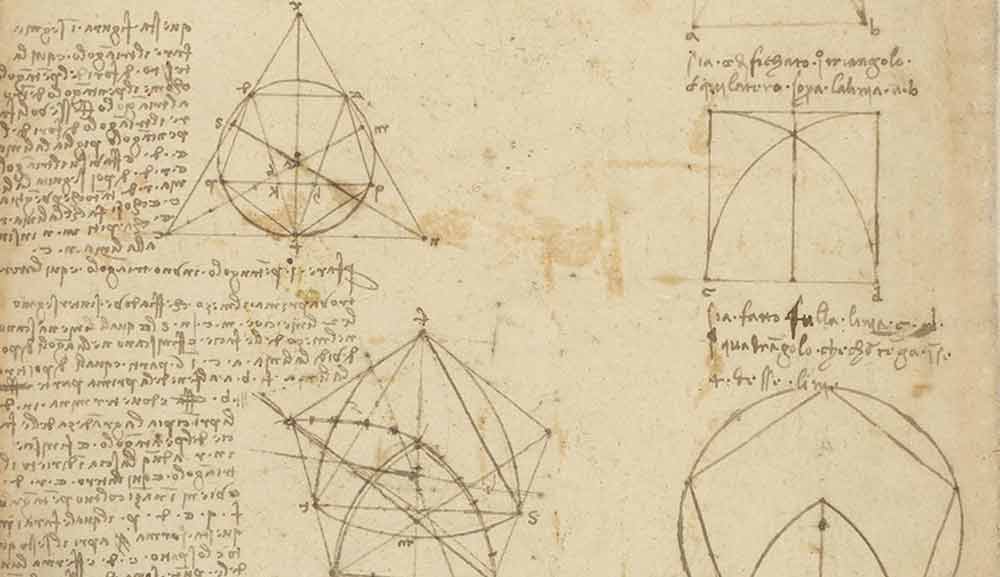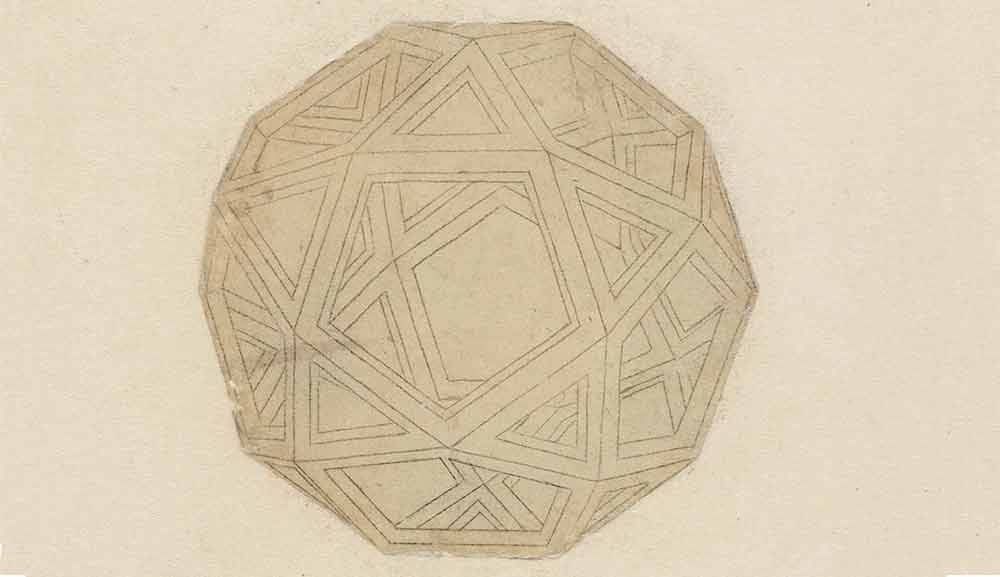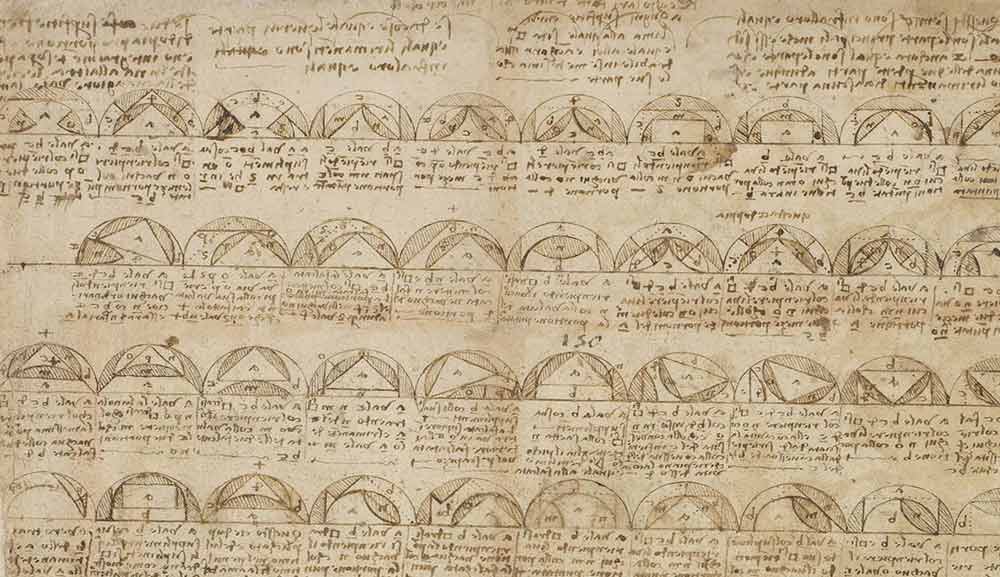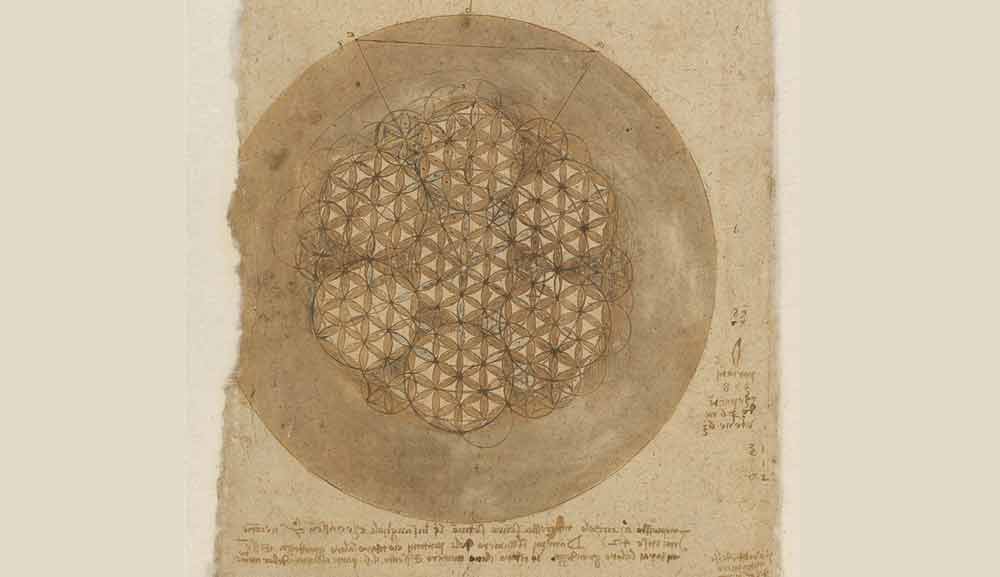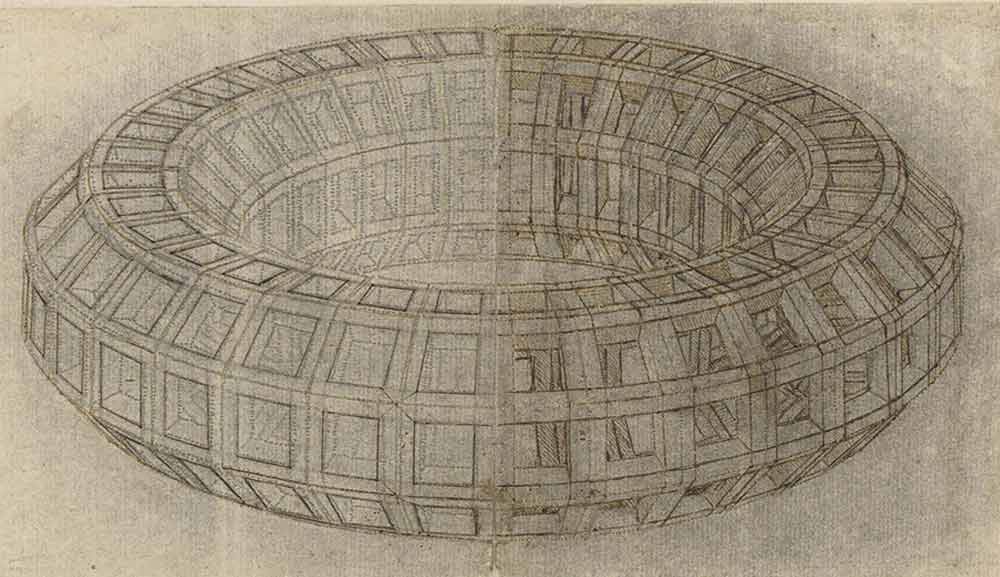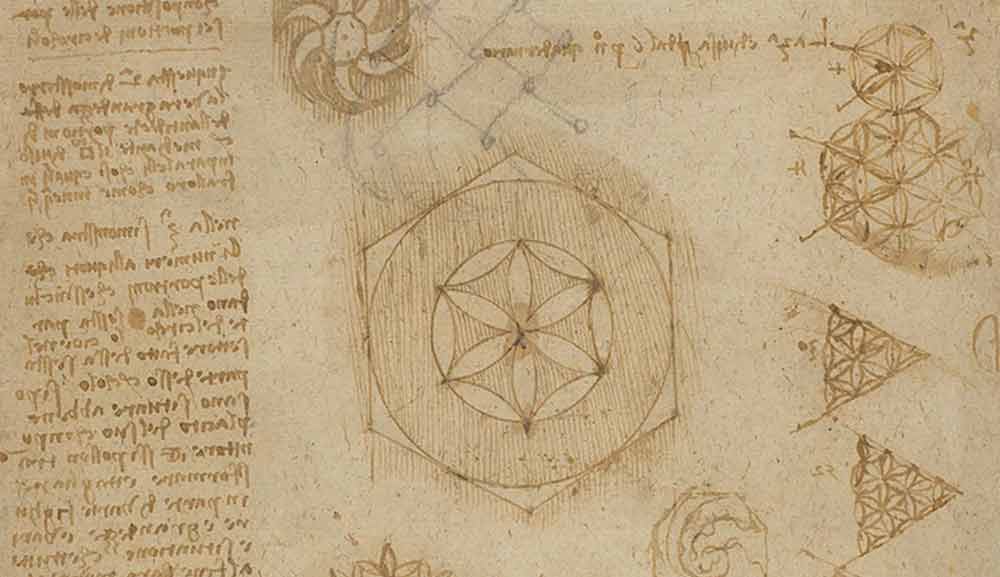In Da Vinci: Shaping the Future, mathematics is the first section of the exhibition, and is explored through facsimiles of pages of the Codex Atlanticus, interactive exhibit, and hands-on education displays.
For Leonardo da Vinci, mathematics was the ultimate key to understanding nature and could be applied in both art and science. He applied the results of his wide exploration of mathematics, in particular the key principles of geometry and proportions, to all other disciplines of his practice.
Da Vinci's interest in geometry was instigated by his artistic pursuits, but was further deepened by a constant will to better understand the core principles of mathematics. This is reflected in the facsimile pages from his Codex Atlanticus on display in the exhibition, some of which feature drawings of geometric shapes purely for artistic purposes, and others which visualise his attempts at understanding complex algebraic formulas.
The legacy of da Vinci’s approach to mathematics is presented in a contemporary artwork by WY-TO, which visualises fractals, a never-ending mathematical pattern.
For Leonardo da Vinci, mathematics was the ultimate key to understanding nature and could be applied in both art and science. He applied the results of his wide exploration of mathematics, in particular the key principles of geometry and proportions, to all other disciplines of his practice.
Da Vinci's interest in geometry was instigated by his artistic pursuits, but was further deepened by a constant will to better understand the core principles of mathematics. This is reflected in the facsimile pages from his Codex Atlanticus on display in the exhibition, some of which feature drawings of geometric shapes purely for artistic purposes, and others which visualise his attempts at understanding complex algebraic formulas.
The legacy of da Vinci’s approach to mathematics is presented in a contemporary artwork by WY-TO, which visualises fractals, a never-ending mathematical pattern.
- MATHEMATICS
- mathematics image gallery
- Video
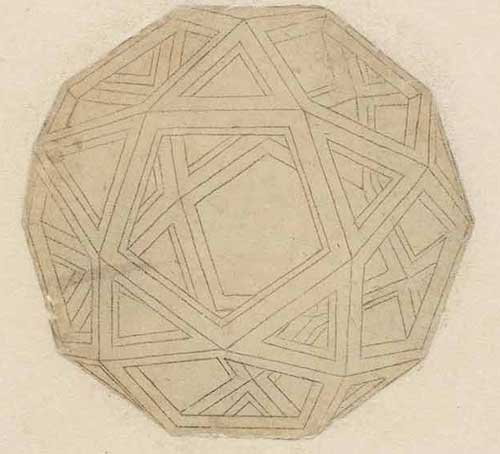
Geometric Shapes
When the Element, a treatise by Greek mathematician, Euclid, was published in Venice in 1482, it spurred wide interest in algebraic problems. However, da Vinci lacked a formal education and was not able to read Latin, the language in which the Element, and most mathematical treatises, were then written. As a result, he used drawing as a medium to translate the principles of geometric shapes.
Most interesting to da Vinci were Euclid’s descriptions of the platonic solids: three-dimensional shapes with sides equal in shape and number that meet at each corner. Da Vinci’s graphic explorations of the platonic solids required a strong understanding of artistic perspective in order to accurately represent a three-dimensional object in two dimensions. He later adapted his drawings of platonic solids for Luca Pacioli’s treatise, The Divine Proportion, an exploration of mathematical and artistic proportion in the golden ratio.
Most interesting to da Vinci were Euclid’s descriptions of the platonic solids: three-dimensional shapes with sides equal in shape and number that meet at each corner. Da Vinci’s graphic explorations of the platonic solids required a strong understanding of artistic perspective in order to accurately represent a three-dimensional object in two dimensions. He later adapted his drawings of platonic solids for Luca Pacioli’s treatise, The Divine Proportion, an exploration of mathematical and artistic proportion in the golden ratio.
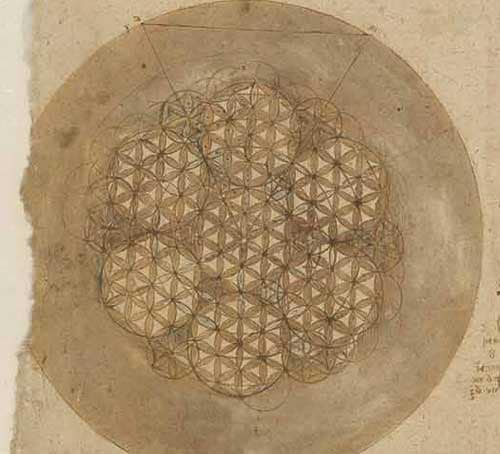
Geometric Puzzles
Da Vinci was fascinated by the transformation of straight lines into curved lines. He considered the straight line to be abstract, geometric, and a convention of mathematics which did not exist in nature. Curved lines, on the other hand, were natural and physical. Da Vinci began to search for a method that could resolve the difference between geometry and natural sciences, which had been separate fields traditionally.
He found his solution in transformation, or geometry in motion. A fluid and dynamic approach to geometry, transformation involves the uniform division of one geometric figure into smaller segments, while retaining the overall surface area. Da Vinci obsessed over these geometric transformations, also called geometric puzzles. Of particular interest to him was the transformation or squaring of the circle.
He found his solution in transformation, or geometry in motion. A fluid and dynamic approach to geometry, transformation involves the uniform division of one geometric figure into smaller segments, while retaining the overall surface area. Da Vinci obsessed over these geometric transformations, also called geometric puzzles. Of particular interest to him was the transformation or squaring of the circle.
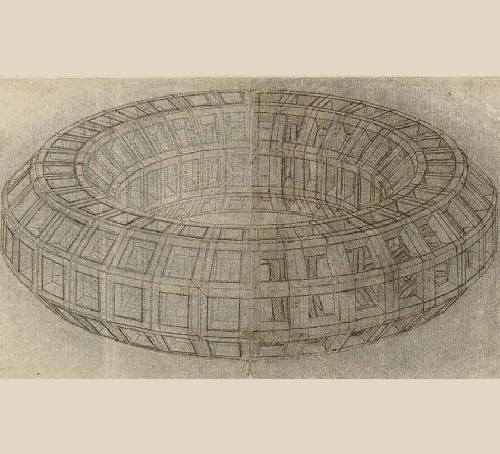
Applications of Mathematical Principles
For da Vinci, geometric shapes and their relationship to each other were key to mechanics and movement, but also, crucially, to human biology. While initially just experiments of geometric forms, his studies of transformation were also applied in other artistic and scientific disciplines. In art, the patterns became the basis for decorative designs used on architectural ceilings, floors, and even in the embroidery of women’s garments in his paintings.
The fundamental characteristic of conservation of volume utilised in da Vinci’s transformation studies also gave him the language to describe the continual movements and transformations of the flows all natural fluids, including that of air and water. Today, we see that da Vinci’s mathematical transformations were early forms of topology, one of the most important fields in modern mathematics.
The fundamental characteristic of conservation of volume utilised in da Vinci’s transformation studies also gave him the language to describe the continual movements and transformations of the flows all natural fluids, including that of air and water. Today, we see that da Vinci’s mathematical transformations were early forms of topology, one of the most important fields in modern mathematics.

